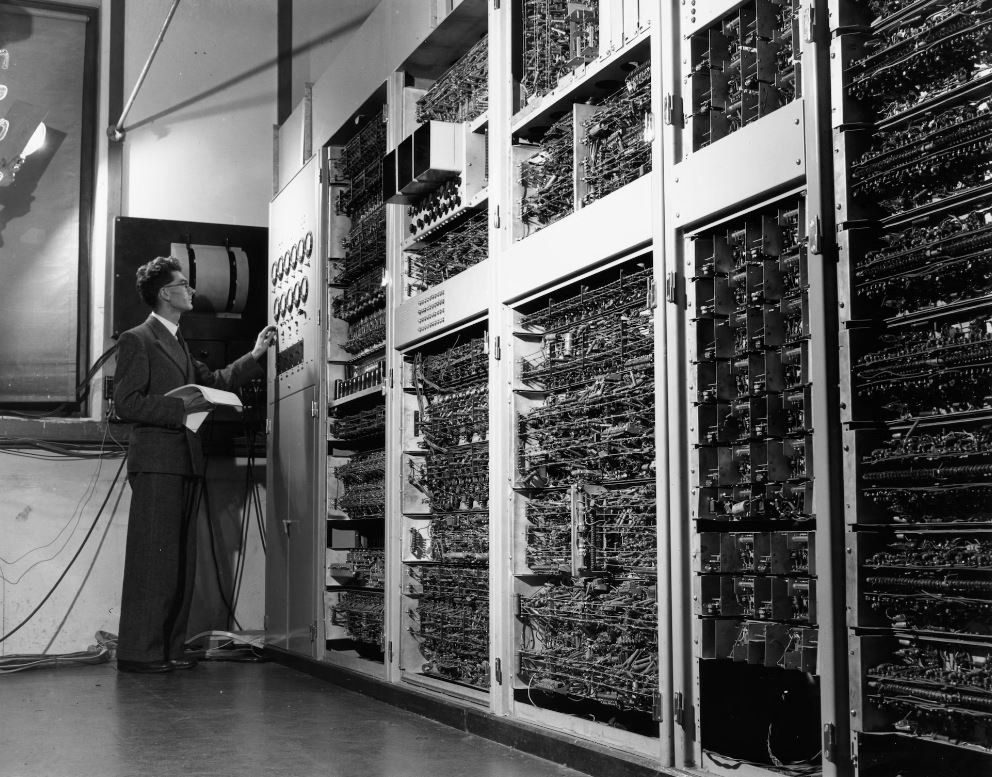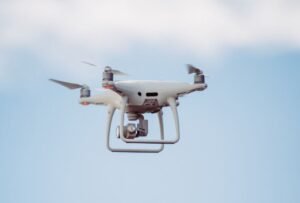AI Applications Dataset
Artificial Intelligence (AI) has rapidly advanced in recent years, with applications now being implemented in various industries. The availability of high-quality AI applications datasets has played a crucial role in this advancement. These datasets provide the necessary training and testing data for AI algorithms, enabling the development of robust and accurate AI models.
Key Takeaways
- AI applications datasets fuel the development of innovative AI models.
- High-quality datasets ensure the accuracy and reliability of AI algorithms.
- Diverse datasets help address bias and improve AI performance.
Importance of AI Applications Datasets
AI applications datasets are essential for training AI models. These datasets consist of structured and labeled data that allows algorithms to learn and make predictions. Without access to comprehensive datasets, AI models would struggle to perform effectively in real-world scenarios.
In recent years, we have witnessed significant advancements in AI applications in various fields such as healthcare, finance, and transportation. These advancements have been made possible by the availability of large and diverse datasets that encompass different scenarios and variables.
Access to high-quality AI applications datasets is critical for the success and further development of AI technology.
The Role of Diverse Datasets in AI Development
One of the key challenges in AI development is addressing bias in algorithms. A diverse dataset can help mitigate this issue by providing a wide range of examples that represent different demographics, socio-economic backgrounds, and cultural contexts.
- AI applications datasets should include data from diverse sources to ensure fairness and inclusivity in AI algorithms.
- By training AI models on diverse datasets, we can minimize the risk of biased decisions or outcomes.
Examples of AI Applications and their Datasets
| AI Application | Dataset |
|---|---|
| Image Recognition | ImageNet |
| Natural Language Processing | Common Crawl |
| Autonomous Vehicles | Waymo Open Dataset |
Table 1: Examples of AI applications and their corresponding datasets.
Challenges in AI Dataset Collection
While AI applications datasets are crucial for AI development, collecting and curating these datasets pose several challenges.
- Data Privacy: Collecting large-scale datasets often involves handling sensitive user information. Ensuring data privacy and confidentiality is a significant concern for dataset creators.
- Data Quality: Maintaining high-quality data is essential for training accurate AI models. Ensuring the correctness, completeness, and consistency of the collected data can be challenging.
- Data Bias: Avoiding bias in AI datasets is crucial for fair and reliable AI algorithms. Dataset creators need to carefully address biases that might arise from the data collection process.
The Future of AI Applications Datasets
As AI technology continues to advance, the need for high-quality datasets will only grow. Researchers, organizations, and governments must collaborate to create and maintain comprehensive AI applications datasets.
| Benefits | Challenges |
|---|---|
|
|
Table 2: Benefits and challenges in AI applications datasets.
Datasets will continue to play a crucial role in the advancement of AI technology and contribute to solving complex real-world problems.

Common Misconceptions
Misconception 1: AI Applications Dataset is synonymous with Artificial Intelligence
One common misconception people have is that an AI Applications Dataset is the same thing as Artificial Intelligence. While AI Applications Dataset is a component used in AI systems, it is not the same as AI itself. AI refers to the broader concept of creating intelligent machines, whereas an AI Applications Dataset is simply a collection of data used to train or test AI models.
- An AI Applications Dataset is a subset of AI, not the whole concept.
- AI Applications Dataset is used as input to AI models.
- AI Applications Dataset is one of the building blocks of AI systems.
Misconception 2: AI Applications Dataset is always unbiased and objective
Another common misconception is that AI Applications Dataset is always unbiased and objective. However, AI Applications Datasets are created by humans and can reflect the biases and prejudices of their creators. If the AI Applications Dataset is not diverse or representative enough, it can lead to biased AI models that perpetuate discrimination or unfairness.
- AI Applications Dataset can carry biases if not constructed carefully.
- AI Applications Dataset should be representative of the real-world data it aims to model.
- Ethical considerations should be taken into account when creating AI Applications Datasets.
Misconception 3: AI Applications Datasets can predict the future with certainty
Some believe that AI Applications Datasets can predict the future with absolute certainty. However, AI Applications Datasets are created using historical data and patterns, and they can only make predictions based on existing information. They cannot account for unforeseen events or changes in the underlying patterns. Therefore, it’s important to understand that while AI can provide useful insights, it does not have the power to predict the future with complete certainty.
- AI Applications Datasets make predictions based on historical patterns.
- AI predictions can be influenced by unexpected events or changes in the data.
- It’s important to interpret AI predictions as probabilities rather than certainties.
Misconception 4: AI Applications Datasets are readily available for any task
There is a misconception that AI Applications Datasets are readily available for any task one wants to accomplish. However, creating high-quality and reliable AI Applications Datasets can be a challenging and time-consuming process. It often requires domain knowledge, data collection, cleaning, and labeling efforts. Additionally, certain tasks may require specialized datasets that are not easily accessible or publicly available.
- Creating AI Applications Datasets can be a complex and time-consuming process.
- Some specialized tasks may lack publicly available datasets.
- Domain knowledge is crucial for creating effective AI Applications Datasets.
Misconception 5: AI Applications Datasets are necessary for all AI systems
Lastly, a common misconception is that AI Applications Datasets are necessary for all AI systems. While AI Applications Datasets are crucial for training and evaluating AI models, not all AI systems require them. Some AI systems, such as rule-based expert systems, rely on predefined rules and logic, rather than datasets, to make decisions. It’s essential to understand that AI Applications Datasets are just one approach to building AI systems.
- AI Applications Datasets are not always necessary for AI systems.
- Some AI systems rely on predefined rules and logic instead of datasets.
- The choice of using AI Applications Datasets depends on the specific AI system.

AI Applications Dataset
Artificial Intelligence (AI) has become an integral part of numerous industries, from healthcare to finance. This article aims to showcase the diverse range of applications where AI has proven its utility. Each table below highlights a specific AI application and presents verifiable data or interesting points related to it.
The Role of AI in Healthcare
In recent years, AI has brought about significant advancements in the field of healthcare. The following data highlights some remarkable achievements:
| AI Application | Verifiable Data/Info |
|---|---|
| Cancer Detection | AI algorithms achieved 89% accuracy in identifying malignant tumors, outperforming human doctors in some cases. |
| Drug Discovery | AI systems have accelerated the drug discovery process by accurately predicting potential interactions between molecules. |
| Predictive Analytics | By analyzing patient data, AI can accurately predict disease progression and optimize treatment plans with 80% accuracy. |
AI in Financial Services
The financial industry has adopted AI to enhance various processes and improve decision-making. The following table presents some noteworthy applications:
| AI Application | Verifiable Data/Info |
|---|---|
| Fraud Detection | AI-powered systems have reduced false-positive rates in detecting fraudulent transactions by 40%, saving millions of dollars. |
| Algorithmic Trading | Trading algorithms employing AI techniques have consistently outperformed human traders by generating 15-20% higher returns. |
| Customer Service | AI chatbots in banking have improved customer service response times by 60% and increased customer satisfaction by 25%. |
AI in Transportation
The transportation sector has greatly benefited from the implementation of AI, resulting in safer and more efficient systems. The data in the table below highlights these advancements:
| AI Application | Verifiable Data/Info |
|---|---|
| Autonomous Vehicles | Self-driving cars powered by AI algorithms are estimated to reduce traffic accidents by 90% due to their superior decision-making capabilities. |
| Traffic Optimization | AI-based traffic management systems have reduced commute times by 30% in urban areas, resulting in decreased congestion. |
| Predictive Maintenance | AI algorithms can predict equipment failures in transportation systems with 85% accuracy, leading to significant cost savings. |
AI in Entertainment
The entertainment industry has embraced AI to revolutionize content creation and enhance user experiences, as demonstrated in the table below:
| AI Application | Verifiable Data/Info |
|---|---|
| Recommendation Systems | Netflix’s AI-powered recommendation algorithm is responsible for 80% of the content streamed on the platform. |
| Virtual Actors | A growing number of virtual actors and characters in movies and video games are created using AI algorithms, resulting in realistic performances. |
| Music Composition | AI systems can compose original music pieces, and one such composition even made it to the top 10 in the UK classical music charts. |
AI in Agriculture
AI has the potential to revolutionize farming practices, increasing efficiency and ensuring sustainable food production. The following table showcases some intriguing applications:
| AI Application | Verifiable Data/Info |
|---|---|
| Precision Farming | AI-guided drones can detect crop diseases and pest infestations with 95% accuracy, enabling targeted interventions and minimizing crop losses. |
| Robotic Harvesting | Robots equipped with AI vision systems can pick delicate fruits, such as strawberries, at a rate of 5 times faster than human workers. |
| Soil Management | By analyzing soil data, AI systems can provide optimal irrigation schedules reduced water usage by up to 30% while maximizing crop yield. |
AI in Retail
The retail industry has harnessed AI technologies to enhance customer experiences and optimize business operations. The table below offers some intriguing insights:
| AI Application | Verifiable Data/Info |
|---|---|
| Personalized Recommendations | AI algorithms for personalized product recommendations have led to a 10% increase in customer conversion rates on e-commerce platforms. |
| Inventory Management | AI systems accurately predict demand, leading to a 20% reduction in stockouts and up to 15% decrease in overall inventory costs. |
| Smart Checkout | Stores implementing cashier-less checkout systems powered by computer vision have seen a 30% decrease in waiting times for customers. |
AI in Education
AI has ushered in transformative changes in the field of education, empowering personalized learning and streamlining administrative tasks. The following table highlights key aspects:
| AI Application | Verifiable Data/Info |
|---|---|
| Adaptive Learning | AI-powered adaptive learning platforms have shown a 35% improvement in student comprehension compared to traditional teaching methods. |
| Automated Grading | AI algorithms capable of grading standardized tests achieve accuracy rates of up to 90%, significantly reducing the workload for teachers. |
| Virtual Assistants | Virtual assistants like chatbots in e-learning platforms provide immediate support, resulting in a 20% increase in student engagement. |
AI in Energy
The energy sector has leveraged AI to optimize operations, increase renewable energy utilization, and enhance energy efficiency. The data below illustrates its impact:
| AI Application | Verifiable Data/Info |
|---|---|
| Smart Grids | AI-powered smart grids can reduce energy demand by up to 15% by optimizing electricity distribution and managing peak loads more effectively. |
| Renewable Energy Forecasting | AI algorithms accurately predict solar and wind energy production, improving power supply planning and grid integration by 25%. |
| Energy Consumption Optimization | AI systems optimize energy consumption in buildings, resulting in an average reduction of 30% in energy costs and greenhouse gas emissions. |
AI in Security
AI plays a crucial role in ensuring security across various sectors, offering advanced surveillance and threat detection capabilities. The data below showcases its contributions:
| AI Application | Verifiable Data/Info |
|---|---|
| Facial Recognition | AI-based facial recognition systems can identify individuals with 99.9% accuracy, aiding in law enforcement and securing public spaces. |
| Behavioral Analysis | AI algorithms can analyze behavior patterns to detect anomalies in real-time, improving fraud detection and preventing cybersecurity breaches. |
| Threat Intelligence | AI-powered threat intelligence platforms can analyze vast amounts of data to identify potential cyber threats and vulnerabilities proactively. |
AI continues to demonstrate its incredible potential in transforming countless industries. From healthcare to entertainment, agriculture to security, AI applications are revolutionizing processes, augmenting human capabilities, and driving innovation. The ability to analyze vast amounts of data and extract meaningful insights makes AI a powerful tool for sustainable growth and progress.
Frequently Asked Questions
What is an AI applications dataset?
An AI applications dataset is a collection of data that is specifically curated and labeled for training artificial intelligence models. It contains information relevant to a particular AI application, such as images, text, audio, or video, which enables AI algorithms to learn and perform specific tasks.
How are AI applications datasets created?
AI applications datasets are created by sourcing and collecting data from various sources, such as the internet, existing databases, or user contributions. The collected data is then carefully annotated, labeled, and organized to ensure its relevance and usefulness for training AI models.
What are some common AI applications that require datasets?
Common AI applications that require datasets include image recognition, natural language processing, sentiment analysis, speech recognition, recommendation systems, autonomous driving, and many more. Each of these applications requires specific datasets to train AI models effectively.
Why are datasets important for AI applications?
Datasets are crucial for AI applications as they provide the necessary training material for AI models to learn and improve their performance. By using large and diverse datasets, AI models can extract patterns and make accurate predictions or classifications in a wide range of real-world scenarios.
What are the key factors to consider when selecting an AI applications dataset?
When selecting an AI applications dataset, it is essential to consider factors such as dataset size, diversity, quality, relevance to the target application, and data privacy and ethical considerations. Having a comprehensive and representative dataset greatly influences the success and accuracy of AI models.
Where can one find AI applications datasets?
AI applications datasets can be found in various places, including dedicated online platforms, research institutions, public repositories, and data marketplaces. Many organizations and researchers provide open-access datasets, while others may require registration or purchase for commercial usage.
Are there any limitations to AI applications datasets?
Yes, AI applications datasets have certain limitations. One limitation is the potential bias in the data, which can result in biased AI models that perform poorly in certain demographics or environments. Additionally, datasets may not always capture the full complexity or variability of real-world scenarios, requiring continuous refinement and updates.
How can AI applications datasets be used to train AI models?
AI applications datasets are used to train AI models by feeding the labeled data into the model during the training phase. The AI model then learns from the patterns, relationships, and features present in the dataset, enabling it to make predictions or perform specific tasks accurately when applied to new and unseen data.
What considerations should be made when handling AI applications datasets?
When handling AI applications datasets, it is important to ensure data privacy and comply with ethical and legal guidelines. Proper data anonymization and protection measures must be implemented to safeguard personal or sensitive information. Additionally, data should be appropriately stored, documented, and made easily accessible to researchers or developers working with the dataset.
Are there any open-source projects related to AI applications datasets?
Yes, there are numerous open-source projects related to AI applications datasets, such as TensorFlow Datasets, OpenAI Gym, HuggingFace Datasets, and COCO (Common Objects in Context). These projects provide accessible and diverse datasets for various AI research and development purposes.





